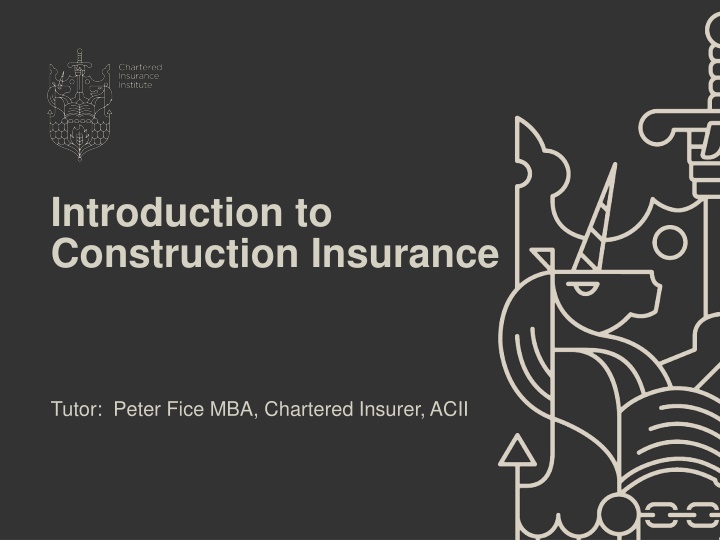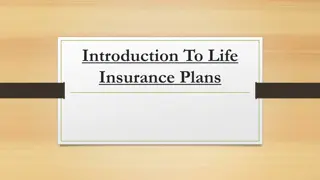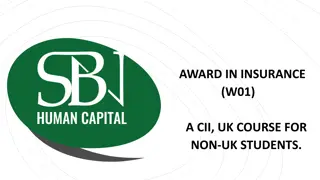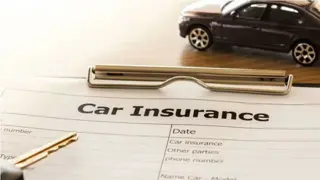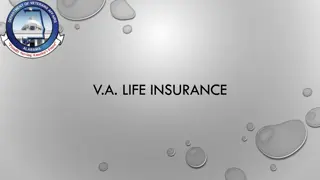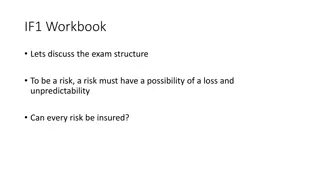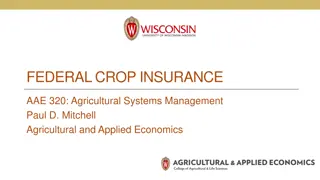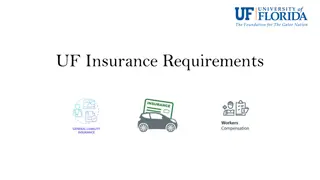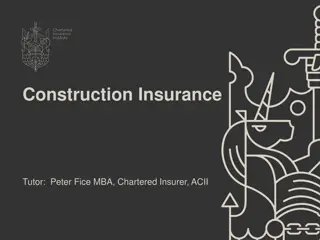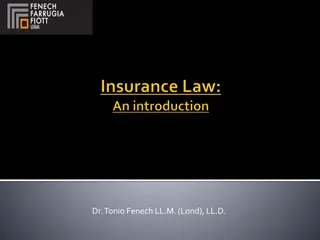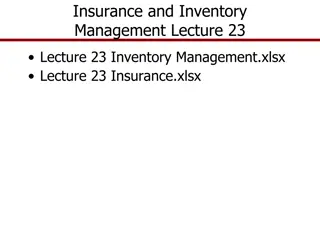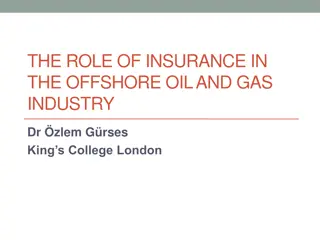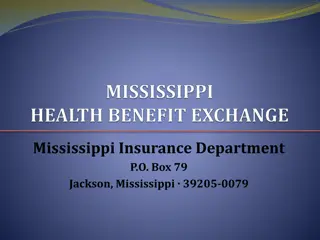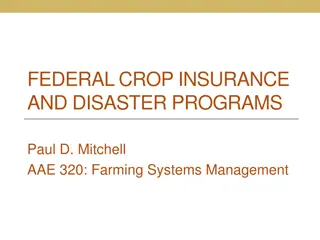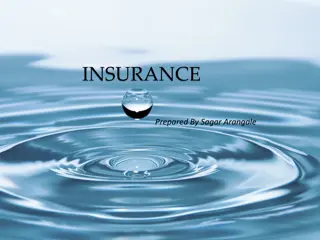Comprehensive Overview of Construction Insurance and Risks
Delve into the intricacies of construction insurance with expert tutor Peter Fice MBA, exploring topics such as Contract Works Insurance, Contractors' Liability, JCT Contracts, and Contractors' All Risks Insurance. Understand the key hazards and risks in the construction industry, covering areas like fire, water damage, theft, and more, essential for anyone involved in the construction sector in the UK.
Download Presentation

Please find below an Image/Link to download the presentation.
The content on the website is provided AS IS for your information and personal use only. It may not be sold, licensed, or shared on other websites without obtaining consent from the author.If you encounter any issues during the download, it is possible that the publisher has removed the file from their server.
You are allowed to download the files provided on this website for personal or commercial use, subject to the condition that they are used lawfully. All files are the property of their respective owners.
The content on the website is provided AS IS for your information and personal use only. It may not be sold, licensed, or shared on other websites without obtaining consent from the author.
E N D
Presentation Transcript
Introduction to Construction Insurance Tutor: Peter Fice MBA, Chartered Insurer, ACII
Learning Outcomes Be aware of Contract Works Insurance and the various ways cover is provided Be aware of Contract Works and Contractors Liability Insurance Policies and optional extras Be aware of the insurance clauses within a JCT contract and the difference between contractual and insurance requirements Be aware of the underwriting and claims process
Agenda What is Contractors All Risks Insurance? Key hazards and risks in the construction industry Definitions and common terms Cover extensions and exclusions Contract works, Plant and Machinery, Tools, and Temporary Buildings
Agenda JCT Standard Form of Contract Liability covers Rating risks Claims
The Construction Industry A very substantial sector in the UK economy. Closely follows the fortune of the UK economy. Includes hundreds of different trades. Thousands of micro businesses, SME s and large scale construction and civil engineering.
What is Contractors All Risks Insurance? Cover for all permanent and temporary works along with materials, tools, plant, machinery and temporary buildings used in connection with a construction contract. It provides cover before, during and after construction.
Hazards and Risks in the construction industry What are the main causes of loss at the various stages of construction?
Hazards and Risks in the construction industry Fire Hot work Water damage Theft and Malicious Damage Weather conditions Toxic Mold
Hazards and Risks in the construction industry Site set up Site clearance Foundations and Installations of Services Frame Walls and Roofs Fitting out Roads and car parks Landscaping Occupation Maintenance
Definitions and common terms Contract Site Contract Works Estimated Contract Price Maintenance period Property insured Hired in Machinery and Plant
Extensions to cover Additional Costs (following a loss) Continuing hire charges (to damaged plant) Contract price increase (inflation protection) Debris removal Employees tools and personal effects Employer s interest European Union and Public Authorities
Extensions to cover Expediting expenses Negligent Breakdown Plans and documents Professional fees Storage of materials
Common exclusions Damage to; Tower cranes (can be included in EAR) Vessels designed to float or travel on water Mechanically propelled vehicles licensed for road use Existing structures Any Property after a Certificate of Completion has been issued
Common exclusions Damage arising from defective design, plans, materials or workmanship Wear and tear, or deterioration Liquidated damages Damage following cessation of works for a period of 3 consecutive months The excess shown in the schedule
JCT Standard Forms of Contract Joint Contracts Tribunal (latest ed 2011) Existing structure and new building work to be insured in joint names of the Principal and the Contractor. Clause 6.5.1 Non negligence
Collateral Warranties Separate to the contract of insurance allowing others (under their separate contract) access to damages where appropriate.
Employer Liability Considerations Construction is a dangerous activity. EL insurance is a statutory requirement. Less skilled workforce and the transitory culture influence numbers of EL claims. Regulatory effect of; > Jackson reforms > Ogden rate
Employer Liability Considerations Working at height Work at depth Manually lifting materials Injury from operating machinery Falling masonry and other objects Inadequate training Hot work
Public Liability Risks Provides cover for Contractors in case someone is injured or their property is damaged as a result of the Contractor s business. Risk to public entering construction sites. Negligent working practices.
Public Liability Risks Provides protection for the Principal against injury and/or damage caused by negligence. Slips and trips. Hot work.
Rating considerations CAR is essentially a Property risk so a rate per cent or per mille on the value of the exposure equates to premium. EL is rated on the overall wages, however it can be divided up by specific trades. PL is rated on Turnover or Contract price.
Claims Claims handlers are generally specialist Property or Liability trained. Similar principles apply to Property and Liability policies.
Learning Outcomes Be aware of Contract Works Insurance and the various ways cover is provided Be aware of Contract Works and Contractors Liability Insurance Policies and optional extras Be aware of the insurance clauses within a JCT contract and the difference between contractual and insurance requirements Be aware of the underwriting and claims process
Introduction to Construction Insurance Thank you for your attendance. Any questions Don t forget your CPD hours!
